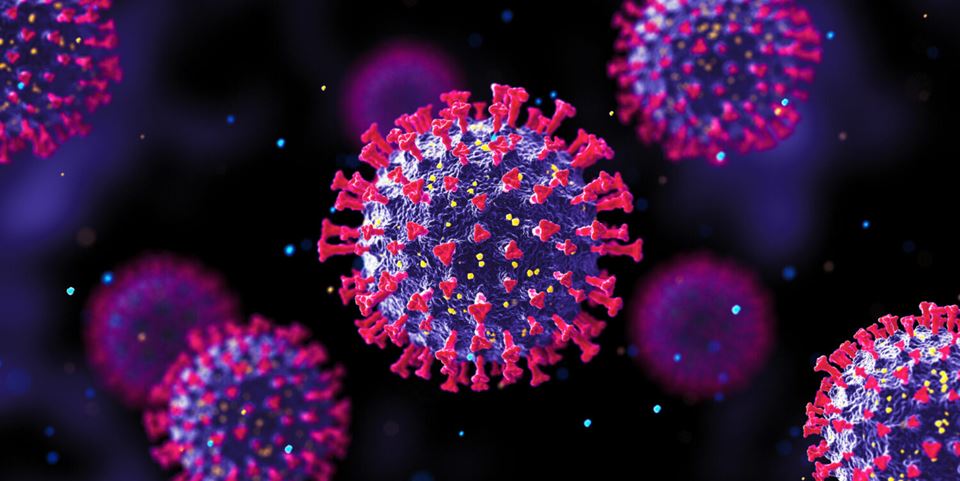“The innovative aspect of an mRNA vaccine is that it makes use of genetic code”. So says Sven Even Borgos, who is a research scientist at SINTEF. “In practice, this means that it delivers a fragment of genetic material that instructs the body to synthesise small, carefully selected components of the virus. The body then develops antibodies that combat the virus that causes Covid-19”, he adds. Borgos is heading a strategic project at SINTEF focusing on medical mRNA technology. He has high hopes that such vaccines will be very effective.

Researcher Sven Even Borgos is heading a major project at SINTEF focusing on mRNA technology. Photo: SINTEF
What exactly is mRNA?
The letters mRNA stand for ‘messenger ribonucleic acid’, which plays an important role in our bodies’ life processes. It can also be described as a ‘working copy’ of our own DNA.
mRNA is made up of four component nucleic acids, abbreviated as the letters A, U, C and G. Whenever the cells in our bodies want to synthesise proteins, they read the configuration of these components like the instructions in a recipe.
The principle behind the development of medicines based on mRNA is to provide the body with either a synthetic working copy of our human DNA, or another code that the body needs to read, so that it can itself make the key proteins it lacks in order to combat disease.
“The reason that mRNA-based drugs have the potential to be so effective is that they work in the same way as our genes”, says Borgos. “The technology is relatively new, but the future looks promising. Among others, SINTEF is participating in a major EU-funded project focusing on the development of a drug to combat hereditary breast cancer using the same method”, he explains.
“The principle behind the development of medicines based on mRNA is to provide the body with either a synthetic working copy of our human DNA, or another code that the body needs to read, so that it can itself make the key proteins it lacks in order to combat disease.
The use of mRNA in the treatment of disease offers major opportunities in several fields, including metabolic and cardiovascular diseases, and neurological conditions. In all these cases, the body will be instructed to synthesise proteins that are otherwise either absent or defective. However, the technology received serious global attention when it became clear that mRNA performed excellently in the manufacture of anti-viral vaccines, such as those used to combat the virus SARS-CoV-2, which causes the disease Covid-19.
The key lies in the viral genes
In order to make the synthetic mRNA component, we must first have access to the DNA from which the working copy is made, as well as an enzyme that can both read the DNA code and then actually manufacture the working copy.
“This all sounds rather technical, but it is in fact one of the most important processes of life on Earth”, says Borgos.
As soon as the genetic make-up of a new virus has been mapped, we can code its key fragments into a synthetic mRNA molecule and deliver it to the body as a vaccine. This is how we used it to combat Covid-19.
The body then uses the mRNA instructions to make a new (spike) protein which is sufficiently similar to the selected parts of the virus. The immune system responds to the new protein, but its protective response progresses without any risk of infection. In this way, the body makes itself ready to combat the virus when it makes its appearance.
Vaccine development in record time
The advantage of manufacturing a vaccine using this method is that it can be done very quickly. In traditional vaccine development, we first have to identify the pathogenic virus, or at least parts of it. The virus is then isolated and made more or less inactive. It is then injected into the body to stimulate an immune response. This strategy has worked since the end of the 18th century, when the first smallpox vaccine was developed. However, the process, which includes testing, is time-consuming and may take up to ten years.
The fully synthetic manufacture of mRNA vaccines enables them to have a much faster impact, and companies such as Pfizer/BioNTech and Moderna have now successfully demonstrated this in practice. Challenges linked to this approach include seeing if the vaccines work equally well for all sufferers, whether they offer prolonged immunity, and whether they can be distributed to enough people. A particular challenge is that in order to prevent their deterioration, the vaccines must be stored under very cold conditions. Pfizer/BioNTech continues to operate with a storage requirement of minus 70 degrees Celsius, although tests are being conducted to see if higher storage temperatures are feasible.
“The experience that we have accumulated to date tells us that the research community and the pharmaceutical sector together have the capacity to bring new and advanced technologies out into the world at a scale and with a speed that we’ve not seen before”, says Borgos.
“Awarding the Nobel Prize to the scientists who developed the technology has been an excellent choice”, he says.
This feature is based on a previous article about the Covid-19 vaccine that was published in 2020 and subsequently shared on sintef.no (in Norwegian).



